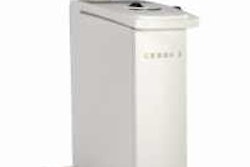What's that burning smell? According to the U.S. Food and Drug Administration, the smoke could be coming from your patient -- if your electric handpieces aren't properly maintained. Already patients have been severely scorched, the agency warns.
An air-driven hand tool will alert the operator to maintenance problems, according to an FDA media release. But an electric tool gives no warning when a bur dulls or gears or bearings clog. Instead, the FDA says, it responds to sluggish performance by sending more power to the head or attachment to maintain speed.
This increased energy rapidly heats the headpiece or attachment, which efficiently conducts the heat to the patient's tissues. If the patient is anesthetized, the scent of burning flesh may be the first warning that something is wrong.
This problem has resulted in third-degree burns requiring plastic surgery. And, the FDA points out, it isn't limited to dentistry. Surgeons, too, have accidently scorched their patients with poorly maintained tools.
The solution is simple, the agency says. Closely follow the manufacturer's instructions for maintenance and routine service. Train your staff to properly clean and maintain all devices on a regular schedule. Examine all attachments and don't use worn drills or burs.



















